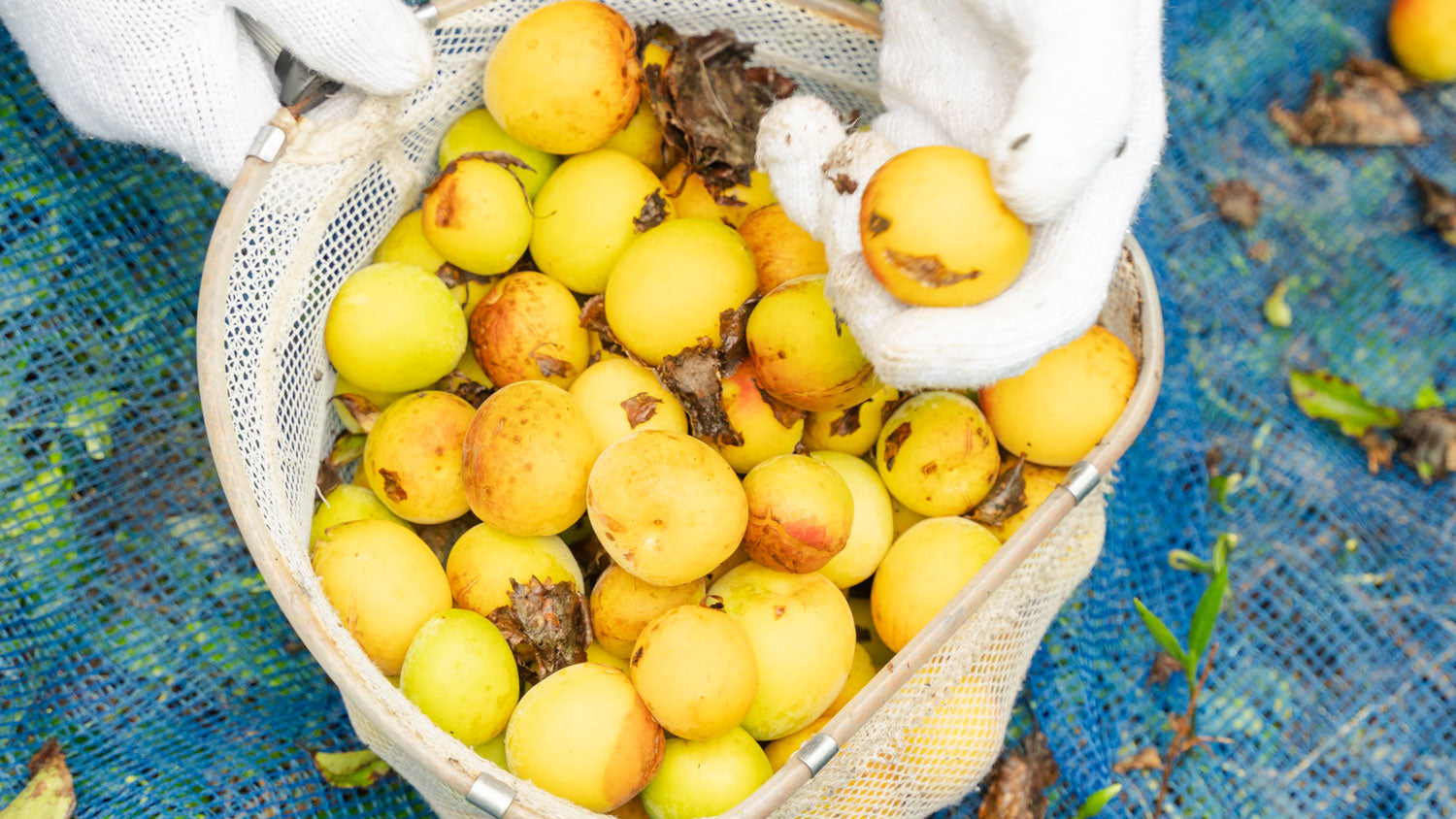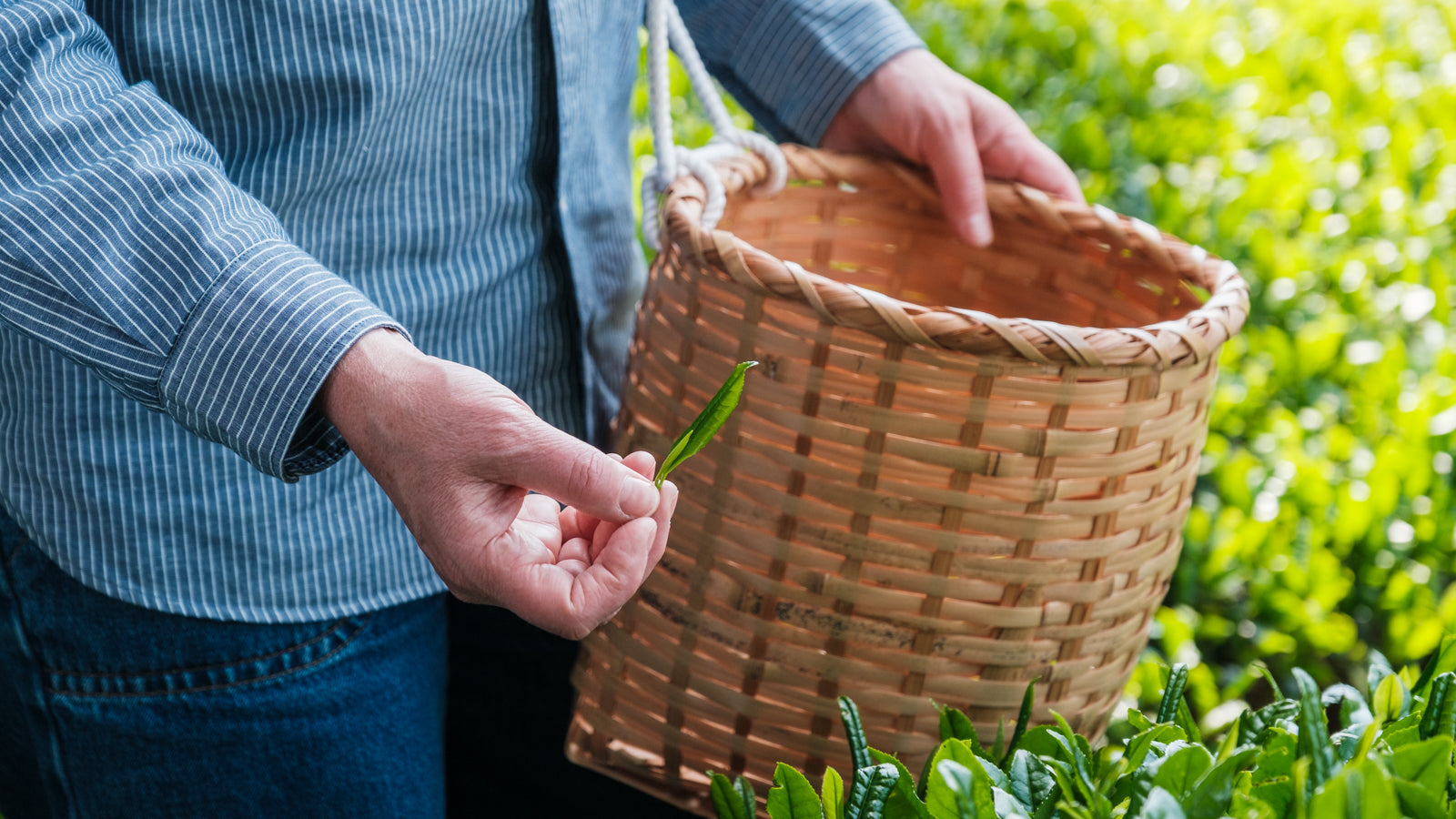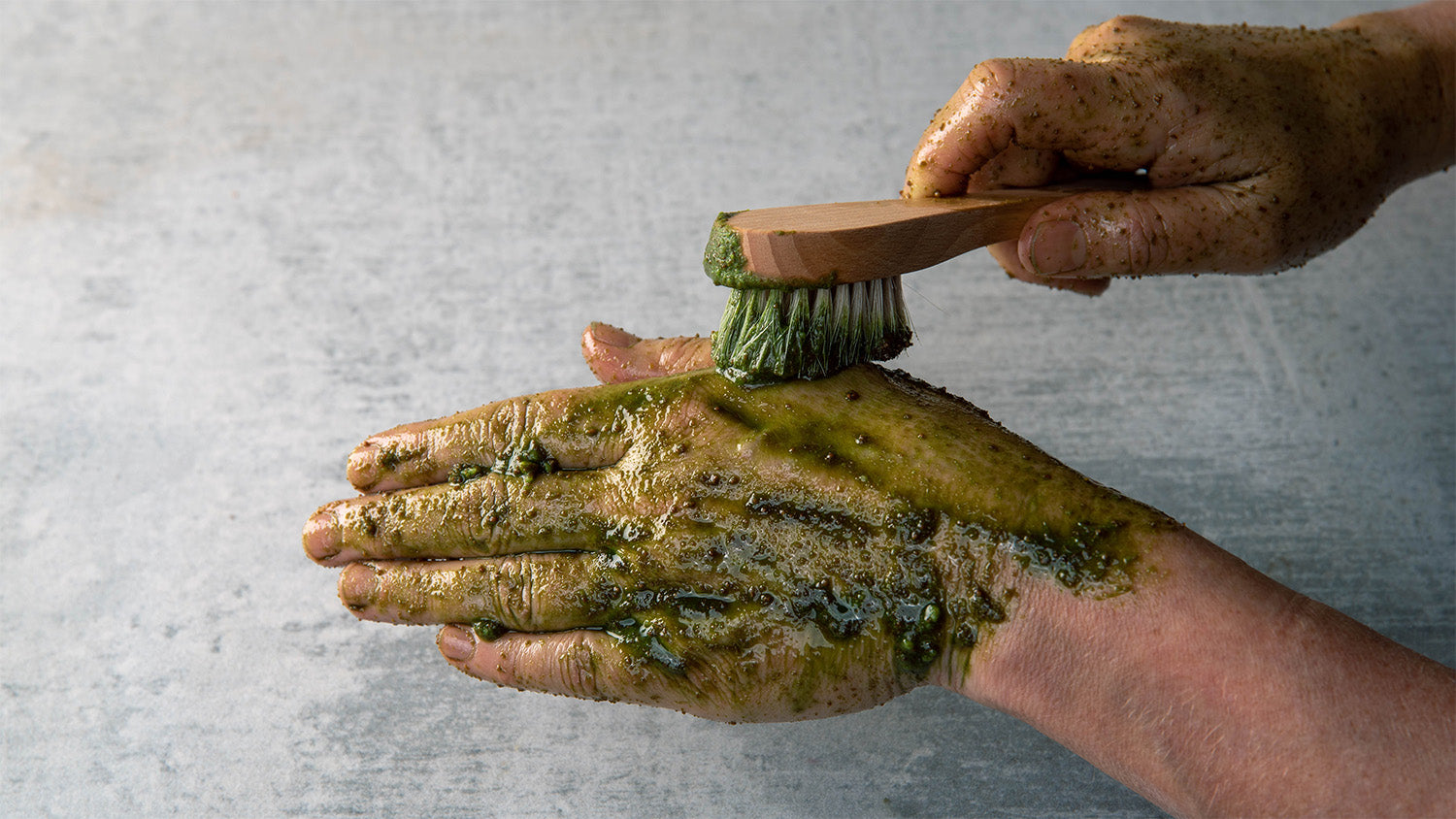UMEBOSHIP PLUMS - HOW ARE THEY PRODUCED?

Umebo ship plums, or ume plums, are Japanese pickled plums with a salty and sour taste. The plums are made from the Nankō-ume plum variety, which has a thick and soft flesh, a thin skin and a rather small core, making it best suited for umeboshi.
RIPENING AND HARVEST
In the Japanese city of Minabe in Wakayama, more umebo ship plums are grown and produced than anywhere else. As the Nankō-ume fruit ripens, it turns from green to a more yellow or reddish color, depending on the variety and level of ripeness. The ripening process usually starts around May and the plums are then harvested from early June to early July. Unripe plums are used for plum wine called Umeshu, but also for juice. The unripe plums are picked by hand, while the fruit that will become umeboshi is allowed to ripen until it falls from the tree, which usually happens around mid-June. To prevent the fruit from being damaged when it falls, workers cover the ground under the tree with netting as harvest time approaches.
THE FORMATION OF THE SOUR PLUM
After the plums have ripened, they are sorted, leaves and other debris are removed, and any damaged plums are discarded. The remaining plums are sorted by size and then carefully washed by hand before being placed in large containers. Usually, about 20 kg of salt is added per 100 kg of fruit, and it is thanks to the salt that the finished umeboshi gets its characteristic salty-acidic taste. The salt helps extract the juice from the plum, which then ferments and develops into ume vinegar, also known as umezu. It takes about four to five days after the salt is added for the juice to begin to develop into vinegar. The plums are allowed to soak in the mixture of salt and vinegar for at least a month before being removed from the tank and dried in the sun for about three to four days. This process produces the traditional umebo ship plums. Plums will last for years if stored in a tightly sealed container, dark and cool.
WHAT ARE UMEBOSHIP PLUMS USED FOR?
Umebo ship plums are usually served in small quantities with rice to enhance the taste. They are also a common ingredient in rice balls wrapped in nori leaves, known as onigiri. The plums can also be used in sushi rolls (makizushi), either with pitted umebo ship plums or as puree, often together with fresh green perilla leaves (shiso). In Japanese folk medicine, a common cure for colds and flu is okayu (rice congee) with umebo ship plums. Another traditional dish is ume chazuke, where green tea is poured over rice and topped with umeboshi. By the way, have you heard of the English expression "an apple a day"? In Japan, umeboshi is its equivalent, and the plum is thought to aid digestion and prevent nausea.






